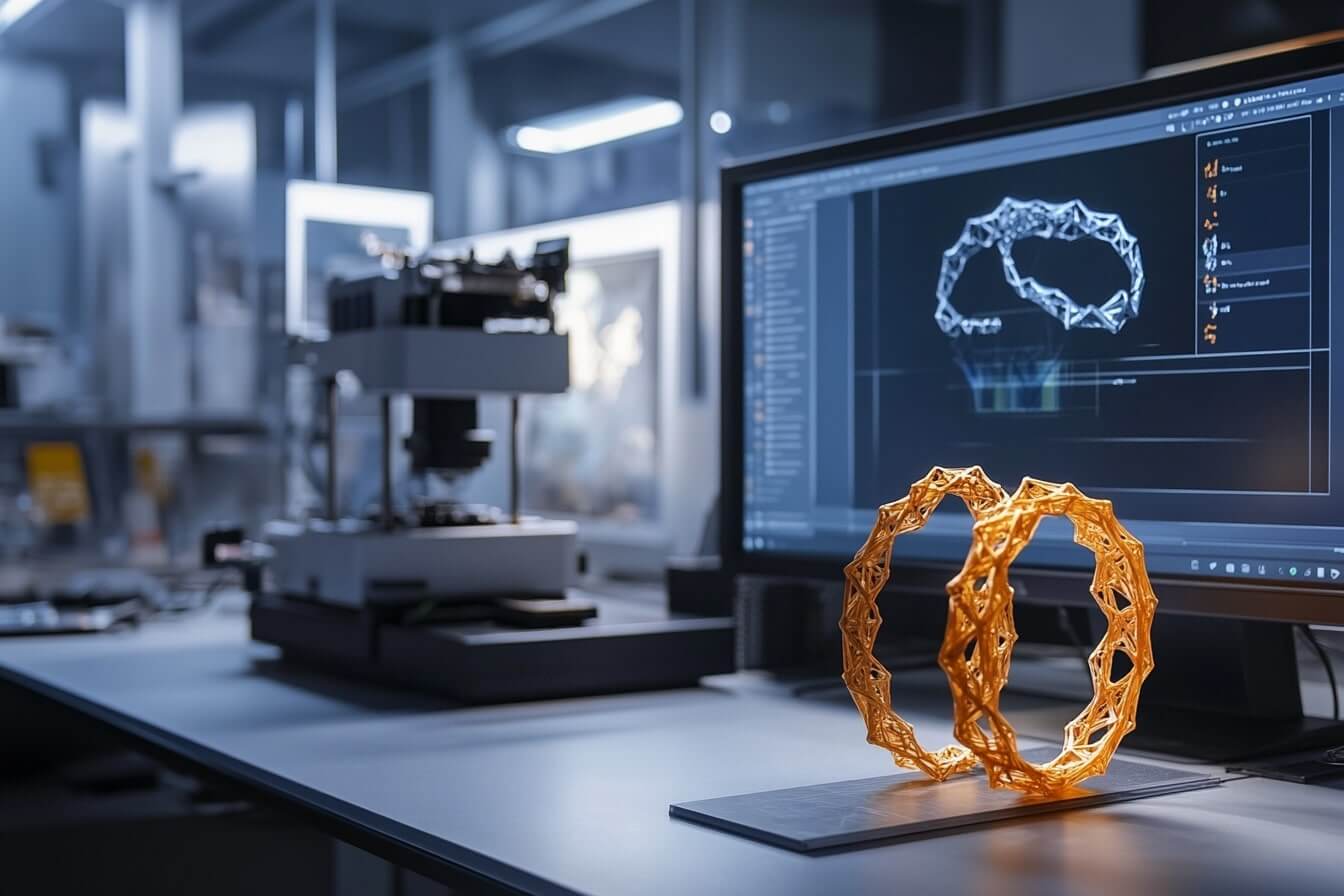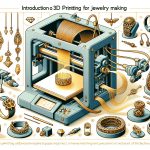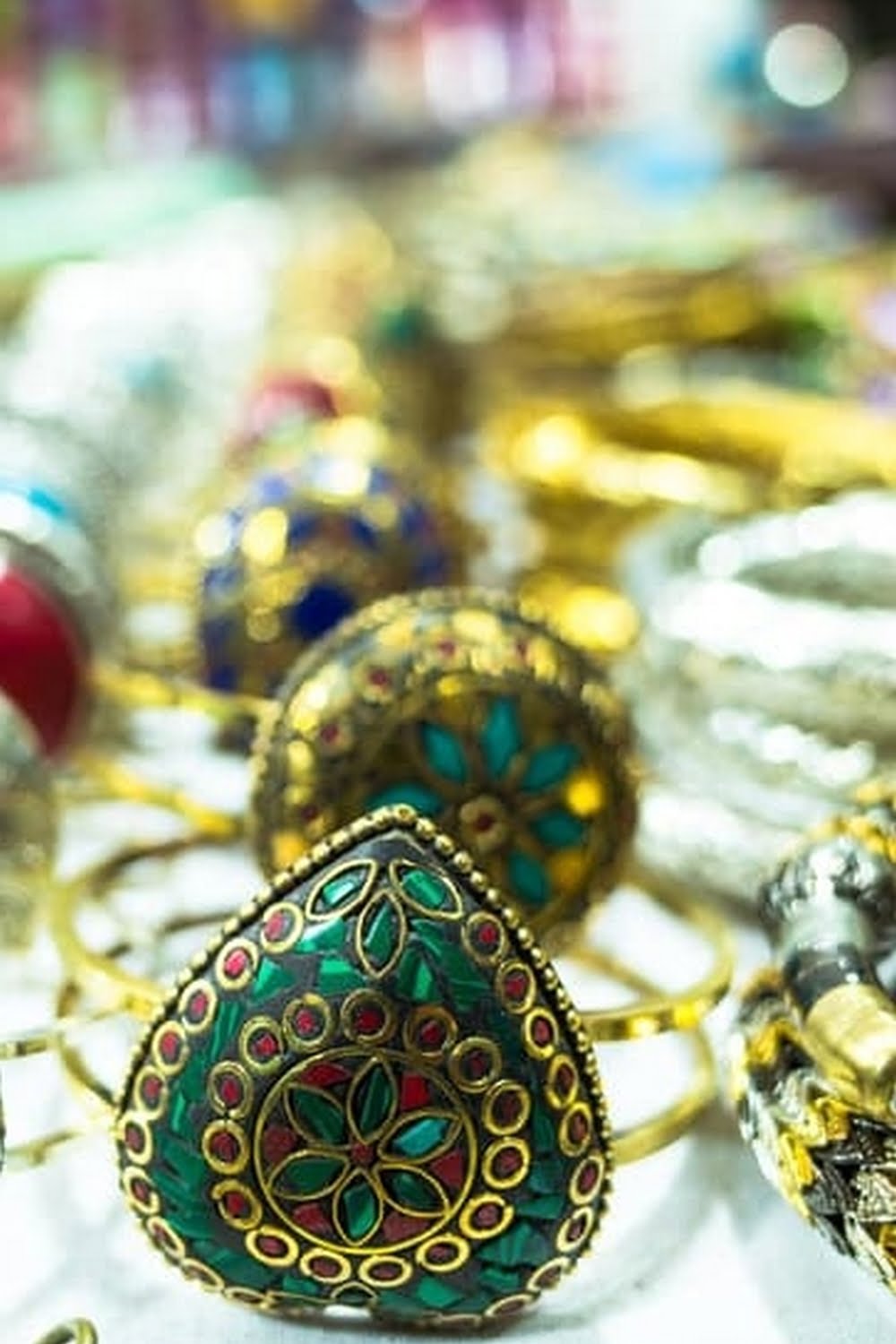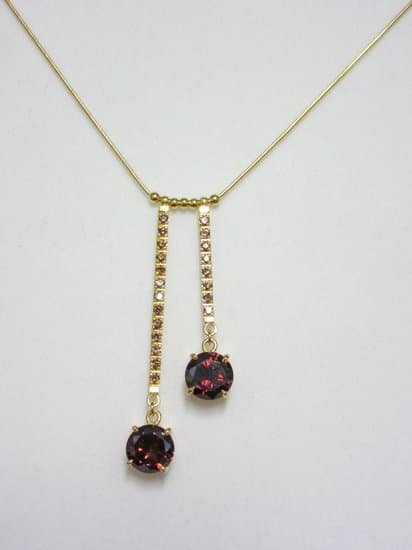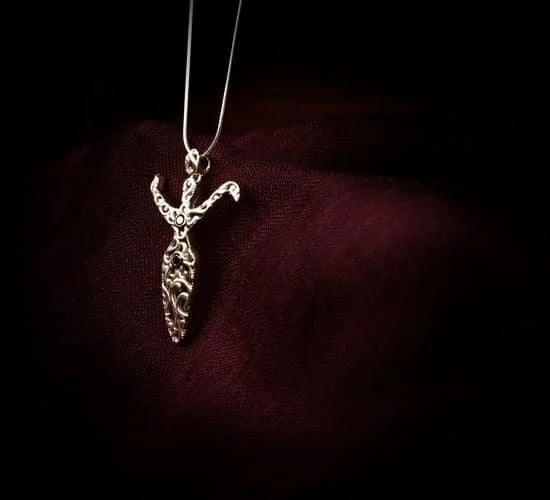Jewelry design has long been an art form rooted in tradition, where skilled artisans painstakingly craft intricate pieces through labor-intensive processes. Historically, the journey from concept to adornment involved a series of meticulous steps, carefully orchestrated by master craftsmen who sculpted models, cast metals, and set stones with unmatched precision. This traditional approach valued craftsmanship and artistry but often limited creative expression by the constraints of manual techniques and tools available to designers at the time.
In recent years, however, technological advancements have begun to revolutionize this age-old craft, and one of the most significant developments is how 3D printing is changing the role of the jewelry designer. As this cutting-edge technology enters the realm of jewelry making, it brings with it the promise of expanded creativity and efficiency.
With 3D printing at their disposal, designers are no longer bound by the limitations that once dictated their work; instead, they can explore complex designs that were previously unattainable.
The introduction of 3D printing marks a new era in jewelry design where innovation and creativity thrive. It allows designers to reimagine what is possible in terms of form and function, opening up avenues for experimenting with intricate patterns and detailed motifs that celebrate both beauty and structural complexity.
Furthermore, as we dive deeper into this digital transformation within the field of jewelry making, it becomes evident that such advancements not only enhance aesthetic possibilities but also reshape how designers conceptualize their roles within an evolving industry landscape.
The Advent of 3D Printing in Jewelry Making
The advent of 3D printing has heralded a transformative era in jewelry making, reshaping what designers can achieve and how they approach their craft. At its core, 3D printing technology allows for the creation of three-dimensional objects from digital files by layering materials. This revolutionary process has led to unprecedented shifts within the jewelry industry since its initial adoption.
Historically rooted in intricate manual labor and hands-on craftsmanship, traditional jewelry design processes often demanded extensive time and skill to translate ideas into tangible items. However, with the integration of 3D printing, these processes have become increasingly streamlined.
The timeline of 3D printing’s adoption in the jewelry industry reveals significant milestones that illustrate how this technology gained traction. In its early years, 3D printing was predominantly used for prototyping purposes, giving designers a quicker path to refining their creations before full-scale production. This use not only saved time but also minimized error rates associated with hand-carved molds or casts.
As advancements continued into the mid-2010s, more companies recognized the cost-effective potential and design versatility that 3D printers offered. By the late 2010s and early 2020s, adoption had become widespread among jewelers seeking both precision and innovative design capabilities.
One cannot discuss how 3d printing is changing the role of the jewelry designer without acknowledging how it enables an artistic freedom previously constrained by traditional methods. This shift is significant; where once there were limitations in shape complexity imposed by conventional casting techniques or carving hurdles due to material fragility, there now exists opportunity bound only by imagination and software capability.
Jewelry designers today utilize advanced CAD (Computer-Aided Design) programs that work seamlessly with 3D printers to ideate designs that are incredibly intricate or feature complex geometrical patterns unfeasible by handcrafting alone-essentially augmenting their creative horizons.
| Milestone | Details |
|---|---|
| Initial Adoption | Mainly used for prototyping |
| Mid-2010s Growth | Began wider adoption due to cost-effectiveness and versatility |
| Present Day Use | Comprehensive integration into professional jewelry creation |
Design Freedom and Creativity Unleashed
How 3D printing is changing the role of the jewelry designer can be primarily seen in the groundbreaking transformation of design capabilities. This technology propels traditional design into a new realm, offering designers unprecedented freedom and creativity that were inconceivable with conventional methods.
Unlike traditional techniques, which often limited designers to simpler forms due to material and tool restrictions, 3D printing allows for intricate lattices, complex geometries, and even interlocking parts to be created seamlessly. This means that jewelry designers are no longer constrained by physical limitations; they can bring imaginative concepts to life with precision and detail previously unimaginable.
This evolution in design tools fosters an environment where innovation thrives. Jewelry designers can now experiment with bold structures and abstract forms without worrying about the feasibility of manufacturing them via traditional crafting.
As such, new possibilities emerge-designs can incorporate unique textures or gradient transitions that reflect light in mesmerizing ways, creating pieces that are not only visually captivating but also evoke emotional responses from wearers. Through these advancements, designers break previous creative boundaries by integrating artistic expression directly into their intricately constructed works of wearable art.
Furthermore, the ability to test these novel designs through rapid prototyping significantly reduces risks associated with trial-and-error processes endemic to jewelry creation historically. By leveraging 3D printing technology throughout their creative process, designers can swiftly iterate on ideas and refine elements until perfection is achieved before committing valuable resources to casting or assembling final pieces.
In addition, this fast-tracked method facilitates real-time collaborations among multidisciplinary teams-engineers exploring structural stability while artisans refine aesthetic nuances-fostering an interdisciplinary approach that enhances both function and form in contemporary jewelry design.
| Feature | Impact |
|---|---|
| Complex Geometries | Facilitates intricate designs unattainable traditionally |
| Rapid Prototyping | Enables quick iteration and refinement of designs |
Customization and Personalization
In recent years, there has been a noticeable shift in consumer desires towards owning personalized and unique items. This growing preference for bespoke pieces has found a perfect ally in the form of 3D printing technology. By facilitating unprecedented levels of customization, 3D printing is reshaping how designers approach the creation of personalized jewelry.
Consumers now have the ability to actively participate in the design process, ensuring that their pieces reflect personal tastes, stories, and significant life events. Whether it’s an engagement ring or a special pendant, customers can enjoy jewelry that resonates personally with them.
The demand for tailored jewelry drives designers to explore inventive ways of incorporating individual preferences into their creations. This is where the remarkable flexibility of 3D printing truly shines, offering countless possibilities for personalization that were once challenging or even impossible with traditional methods.
Designers can effortlessly tweak aspects such as size, shape, and details without being restricted by conventional production limitations. Moreover, they can utilize various materials and finishes to create distinct textures and appearances that align perfectly with customer expectations-all while efficiently leveraging how 3d printing is changing the role of the jewelry designer.
To fully harness this capability, many designers are shifting their focus towards developing strong digital skills alongside their traditional craftsmanship techniques. Mastery over 3D modeling software allows them to visualize custom designs accurately and present these concepts effectively to clients before actual production begins. Essential software tools grant precision in adjustments based on immediate client feedback-a feature critical in fulfilling the increasingly specific demands from today’s consumers who desire one-of-a-kind statement items.
The integration of these advanced technologies not only streamlines the entire workflow but also enables designers to meet even tight deadlines without compromising on creativity or quality. Consequently, this evolution leads to a new era where designers act as partners in bringing clients’ visions to life through endless customization options only possible via modern technology advancements like 3D printing.
Streamlining the Production Process
3D printing technology is revolutionizing the jewelry industry by streamlining production processes in numerous ways, making it a game changer for the all-important stages of manufacturing. One key advantage that 3D printing offers is the significant reduction in production time.
Unlike traditional methods that require lengthy steps from sketching and carving wax models to casting and finishing, 3D printers can quickly manufacture intricate designs directly from digital files. This ability to rapidly produce prototypes allows designers to experiment and iterate on their creations with unprecedented speed, drastically cutting down the timespan between initial concepts and final products.
The efficiency provided by 3D printing is not limited to speed alone; it also plays a crucial role in reducing material waste. In traditional jewelry-making processes, materials such as gold and silver are meticulously carved yet often result in sizeable leftover scraps that must be recycled or discarded.
On the other hand, 3D printing builds objects layer by layer, which precisely allocates materials only where needed, minimizing excess. For environmentally conscious designers seeking sustainable methods, this process aligns with eco-friendly objectives by conserving valuable resources and reducing environmental impact.
Additionally, rapid prototyping facilitated by 3D printing gives jewelry designers immediate access to tangible versions of their designs without committing substantial resources beforehand. This approach is instrumental in allowing stakeholders-be they clients or retail partners-to provide feedback before entering mass production phases.
More importantly, it enables designers to understand how 3d printing is changing the role of the jewelry designer through a hands-on experience that integrates customer insight early into development. Benefits like these illustrate how adopting this innovation not only saves time but also optimizes resource usage while empowering designers to refine their craft continuously based on real-world input:
- Time Reduction: Accelerates design iteration cycles.
- Material Efficiency: Minimizes waste during production.
- Informed Designing: Gathers vital client feedback effortlessly with early prototypes.
This technological leap heralds a new era for creatives who now navigate between traditional artistry and cutting-edge digital fabrication confidently-even enriching what it means today to be an artisan in this ever-evolving field.
Redefining the Skill Set of Jewelry Designers
The advent of 3D printing technology is profoundly redefining the skill set required for modern jewelry designers. Traditionally, jewelry design focused heavily on manual craftsmanship skills, such as metalworking and stone setting, developed over years of apprenticeship and practice.
However, with 3D printing becoming a pivotal tool in the industry, these traditional skills are now being complemented by digital competencies. Designers must increasingly embrace new ways of working that involve computer-aided design (CAD) software, requiring them to translate their artistic vision into digital formats that machines can interpret and construct.
Learning how 3D printing is changing the role of the jewelry designer begins with acquiring proficiency in CAD software and digital sculpting tools. These programs allow designers to create highly detailed and intricate models that were previously impossible to achieve with conventional methods.
This shift demands a deep understanding of both technology and material science, as knowledge about various 3D-printable materials-like waxes, resins, or even precious metals-is essential to ensure designs are not only aesthetically pleasing but also structurally sound. Consequently, modern jewelry designers must be as comfortable clicking a mouse as they are wielding a jeweler’s saw.
Moreover, this technological transformation requires curriculum changes within educational institutions specializing in jewelry design. Schools now incorporate courses that cover parametric modeling and rapid prototyping alongside traditional techniques.
This dual education prepares students for the future market expectations where versatility between handcraftsmanship and tech-savviness will distinguish leading professionals in the field. The ability to fluently move between physical crafting techniques and digital innovation allows today’s designers to engage more dynamically with clients’ needs while pushing creative boundaries further than ever before.
Sustainability
Eco-Conscious Material Choices
One of the most transformative aspects of 3D printing in the realm of jewelry design is its contribution to sustainability through innovative material choices. Traditional jewelry manufacturing often involves significant material waste, as metals are cut and shaped, leaving behind unusable scraps.
In contrast, 3D printing utilizes additive manufacturing processes that drastically reduce waste by building items layer by layer with precision. This method not only conserves resources but also introduces opportunities to experiment with alternative and recycled materials, thereby minimizing the environmental impact while meeting consumer demand for eco-friendly products.
Energy Efficiency and Reduced Carbon Footprint
Traditional jewelry production methods can be energy-intensive, involving melting metals at high temperatures and using large machinery that consumes substantial electricity. 3D printing technology, on the other hand, offers a more energy-efficient solution. By employing techniques that require less heat and utilize compact, efficient equipment, this method decreases overall energy consumption significantly.
Furthermore, because designs can be refined digitally before actual production begins, there is less need for multiple iterations or corrections that consume additional resources. Understanding how 3D printing is changing the role of the jewelry designer also includes recognizing their evolving responsibility towards incorporating sustainable practices into their workflows.
Localized Production Reducing Transportation Impacts
The decentralized nature of 3D printing allows for localized production of jewelry pieces, which plays a crucial role in reducing transportation emissions associated with shipping raw materials or finished goods across long distances. Jewelry designers utilizing 3D printing can produce items closer to their customer base or even within clients’ locales if they have access to a 3D printer.
This shift not only ensures quicker delivery times but also significantly decreases the carbon footprint involved in transporting products internationally. In addition to providing economic benefits through cost savings on logistics, this model aligns strongly with global initiatives focused on reducing greenhouse gas emissions as part of broader sustainability goals.
Case Studies
The Rise of Contemporary Innovators
In the realm of 3D printed jewelry design, several pioneering designers and brands have emerged over recent years, showcasing how 3D printing is changing the role of the jewelry designer. One such innovator is Nervous System, a design studio known for its biomimetic algorithms that create complex, nature-inspired patterns impossible to achieve through traditional methods.
Their application of generative design combined with 3D printing technology has enabled them to produce intricate pieces that are both aesthetically stunning and physically robust. This innovative approach not only reframes what is possible in design but also challenges traditional boundaries by creating structures that would never have been considered feasible before.
Inspiring Crossover Design Methodologies
Additionally, fashion-forward designer Iris van Herpen has been at the forefront of merging high fashion with cutting-edge technology, often utilizing 3D printing processes to craft unique pieces that blur the line between jewelry and wearable art. By treating textiles and metals as interchangeable materials within her collections, van Herpen exemplifies how 3D printing facilitates cross-disciplinary creativity among artists who are eager to experiment beyond conventional material constraints.
Her works demonstrate the potential for unexpected interactions between different sectors within design disciplines by employing digital fabrication techniques. Such approaches redefine jewelry as we know it and illustrate how harnessing new technologies can broaden a designer’s skill set and creative palette.
Shaping New Business Models
Another influential name in this transformation is Maison 203, an Italian brand that focuses on minimalist yet architecturally inspired designs achieved through 3D printing. They emphasize the acceleration of production times without compromising detail or craftsmanship quality-underscoring how quickly consumer demands can be met with customized options afforded by additive manufacturing.
The adaptability inherent in these processes allows for more efficient stock management and opens up new avenues for personalized creations tailored to individual preferences, illustrating another facet of how 3d printing is changing the role of the jewelry designer in response to market needs.
Through their groundbreaking work, these designers not only highlight the enhanced capacities offered by technological advancements like 3D printing but also steer a future where collaboration between intuitive artistry and precise computational processes takes precedence. By examining their journey closely, others in the industry can draw inspiration from successful integrations of innovative tools into established practices-paving ways toward more progressive directions within both concept development and aesthetic execution alike.
Future Trends
As the jewelry industry continues to embrace technological advancements, 3D printing stands at the forefront of what’s possible in design and production. Currently, this technology is revolutionizing how designers conceptualize and bring their pieces to life.
In looking toward the future, it’s clear that 3D printing will not just remain a trend but become a staple in the jewelry designer’s toolkit. This tool offers unprecedented opportunities for innovation, reshaping both the creative process and production dynamics within the industry.
One significant prediction is how 3D printing will further democratize jewelry design. As more intuitive and affordable 3D modeling software becomes available, it will allow aspiring designers with limited resources to enter the market. Previously, creating intricate designs required substantial investment in tools and materials.
Now, any designer with a computer can experiment with complex geometries and detailed art without upfront material costs or waste concerns. This development hints at a future where diverse voices contribute to design innovation, potentially leading to a broader range of aesthetics and styles in jewelry collections around the world.
Additionally, how 3d printing is changing the role of the jewelry designer includes redefining collaboration across different sectors of fashion and technology. We may see an increased partnership between tech companies developing cutting-edge 3D technologies and established jewelry brands aiming to push boundaries in craftsmanship.
Such synergies could result in entirely new forms of wearable art that were previously unimaginable-from smart accessories that integrate digital features discreetly into traditional designs to sustainable collections crafted from innovative bio-materials using eco-friendly processes. The role of jewelry designers as creative technologists will likely evolve continuously as they blend artistry with science to captivate consumers’ imaginations while meeting environmental consciousness demands.
Conclusion
As we navigate the evolving landscape of jewelry design, it becomes abundantly clear that 3D printing is not merely a fleeting trend but a transformative force reshaping the industry. This innovative technology has revolutionized how jewelry designers conceptualize and realize their creations.
By embracing 3D printing, designers are breaking free from the constraints of traditional methods, allowing for unprecedented creativity and the ability to produce intricate designs once deemed impossible. The role of the jewelry designer is undergoing a fundamental shift as they increasingly incorporate digital skills into their repertoire to unlock new design possibilities.
Designers are now armed with tools that enable them to meet consumer demands for personalized pieces while contributing to more sustainable practices. With the integration of 3D modeling software and digital sculpting, designers can produce customized jewelry with remarkable precision and detail, catering to individual tastes and preferences like never before.
This degree of personalization is not only redefining luxury in an era where consumers demand uniqueness but also highlighting how 3D printing is changing the role of the jewelry designer into one that balances both technical expertise and artistic vision.
Looking toward the future, it is evident that those who adopt these technologies will lead in a competitive market where innovation drives success. As pioneers like those mentioned in our case studies have shown, embracing 3D printing opens up vast opportunities for creativity, efficiency, and sustainability within jewelry design.
Encouragingly, today’s designers are positioned at the crossroads of tradition and modernity-a place ripe with potential for growth if they choose to embrace change wholeheartedly. As such, continued learning and adaptation will be key for those wanting to make a mark in this digital era, ensuring they remain at the forefront of this dynamic industry’s evolution.
Frequently Asked Questions
How 3D Printing Is Disrupting the Jewelry Industry?
The jewelry industry has experienced significant changes due to the introduction of 3D printing technology. This innovation allows for a level of precision and creativity that traditional methods simply cannot match. Jewelers are now able to produce intricate designs with more consistency and at a much faster pace.
It enables customized jewelry, where customers can easily personalize their pieces, choosing unique patterns or even crafting entirely bespoke items. Cost efficiency is also improved because it reduces material waste and lowers labor costs, allowing small-scale jewelers to compete with larger companies by offering high-quality, custom products at competitive prices.
How Has 3D Printing Changed the Design Industry?
The design industry has been revolutionized by 3D printing, transforming the way designers conceptualize and create new products. Designers now have the ability to quickly prototype designs, which accelerates the process from idea to physical model significantly faster than traditional methods would allow. This innovation fosters greater creativity as designers experiment with complex geometries and structures previously deemed impractical or impossible to construct physically.
Furthermore, it facilitates collaboration across industries as digital files can be shared globally for immediate production anywhere in the world where a 3D printer is available. Overall, it boosts efficiency while empowering designers to push boundaries with enhanced creative freedom.
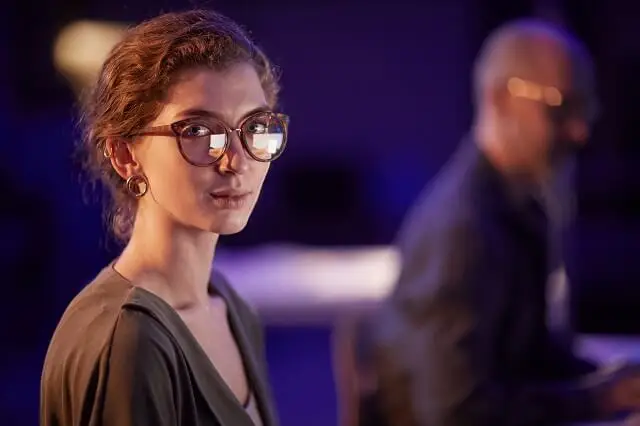
Welcome to my jewelry blog! My name is Sarah and I am the owner of this blog.
I love making jewelry and sharing my creations with others.
So whether you’re someone who loves wearing jewelry yourself or simply enjoys learning about it, be sure to check out my blog for insightful posts on everything related to this exciting topic!

